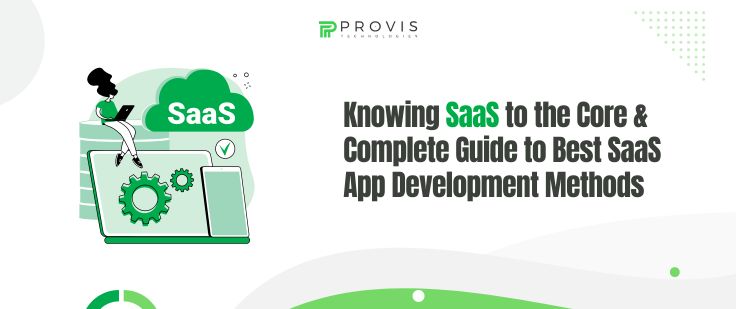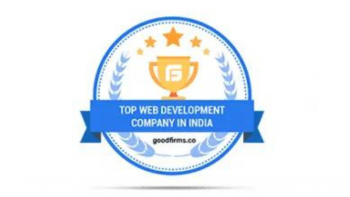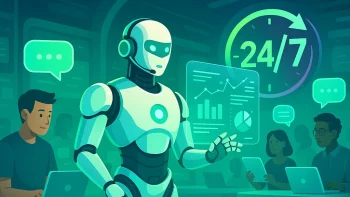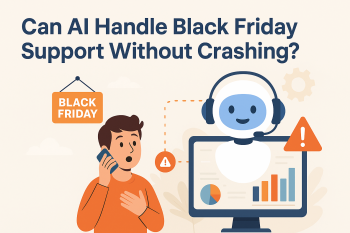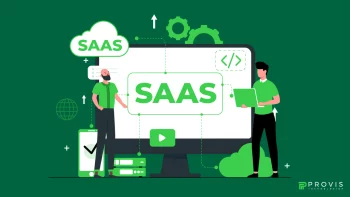Introduction to SaaS
SaaS is Software as a Service. As the name suggests, SaaS allows software providers the ability to provide their application’s services to the users without the users requiring the need to install that particular application in their devices. All this is done via the internet, on the internet. Let’s understand this using an example:
Have you heard of or used Zoom or Slack?
Even if your answer is no, you can go check right now – these are the platforms for business communication via audiovisual calls or messaging. When you search them, you can see that none of these applications require installation, meaning you can use them directly on the internet.
Now, this is possible because they are SaaS applications. These applications are hosted on their respective servers, and you can use them whenever you want without installing them on your devices – all you need is a stable internet connection.
Types of SaaS Apps
There can be various types of SaaS apps – precisely, it can be whatever you want it to be; however, usage of SaaS apps can be most sought in the below sectors.
Business Management
SaaS applications in this category help businesses manage various aspects of their operations, including Customer Relationship Management (CRM), Enterprise Resource Planning (ERP), and Project Management.
Collaboration & Communication
Tools for team collaboration, messaging, and video conferencing fall under this type, enabling seamless communication and cooperation among team members. The best examples are Zoom & Slack.
Human Resources (HR)
SaaS HR applications streamline human resource processes, including recruitment, employee onboarding, payroll management, and performance tracking.
Content Management
These applications assist in creating, managing, and distributing digital content, providing document storage, version control, and collaboration.
Customer Support
SaaS applications for customer support offer ticketing systems, knowledge bases, and communication channels to enhance customer service and satisfaction.
Marketing Automation
SaaS marketing tools automate & optimize marketing processes, including email campaigns, social media management, and analytics.
Ecommerce
SaaS e-commerce platforms provide businesses the tools to set up and manage online stores, including inventory management, payment processing, and order fulfillment.
Don’t Miss:- SaaS versus Traditional Software: Why SaaS Development Services Outdo Traditional?
Benefits of SaaS App
Cost-Effective Model
SaaS development eliminates the need for users to invest in infrastructure, hardware, or dedicated IT staff. The subscription-based model ensures predictable costs and allows businesses to scale without significant upfront expenses.
Accessibility & Collaboration
SaaS applications are accessible from anywhere – this brings ease in collaboration among teams, especially in remote or distributed work environments, and also in reaching a bigger audience.
Automatic Updates & Maintenance
Service providers handle updates, patches, and maintenance tasks centrally. This ensures that users always have access to the latest features and security enhancements without them doing anything for these aspects.
Scalability & Flexibility
SaaS applications are designed to scale to accommodate a growing user base. This scalability & flexibility to make changes allow businesses to adapt the SaaS app to their evolving needs.
Enhanced Security
SaaS providers invest heavily in security measures, including data encryption, access controls, and compliance with industry regulations. This often results in a higher level of security than individual organizations can provide.
Must Know:- The Future of E-commerce: Embracing SaaS Solutions
Differences Between SaaS Applications & other Web Applications
SaaS applications & web applications both use servers to be hosted, and both can be accessed via web browsers by the users – then what’s the difference between them?
There are still differences between them – please look at the points below to get clarity between the duo.
Deployment Model
SaaS Applications
SaaS is a software delivery model where the application is centrally hosted and provided to users on the internet. Users typically access SaaS applications through a web browser – eliminating the need for individual installations on local devices.
Web Applications
As SaaS, web applications refer to any software application accessed through a web browser. Hosted on a central server, they might require individual installations on user devices.
Licensing & Accessibility
SaaS Applications
SaaS applications usually follow a subscription-based licensing model. Accessibility is typically universal through web browsers, and updates are managed centrally by the service provider to ensure all users have the latest version.
Web Applications
Web applications may have various licensing models, and accessibility might depend on individual user licenses or installations. Unlike SaaS, web app users often need to manage updates themselves.
Customization & Scalability
SaaS Applications
SaaS applications are designed with multi-tenancy and scalability in mind. They often provide customization options to allow users to customize the application according to their needs without sacrificing the advantages of a centralized architecture.
Web Applications
On the other hand, with web apps, customization & scalability depend on the design and architecture choices made during development. Some web applications may allow customization, but scalability may require additional efforts.
Maintenance & Upgrades
SaaS Applications
Maintenance & upgrades are handled centrally by the service provider. Users have access to the latest features and security updates without individual intervention.
Web Applications
Users typically handle maintenance tasks, such as updates & patches, on their respective devices. This can lead to fragmentation and potential compatibility issues.
Related Blog:- Know How to Choose the Right SaaS Development Company
Why SaaS Development?
When the talk is about SaaS apps, the question should not be why SaaS; instead, it should be why not SaaS.
Since we have already gone through the SaaS app benefits, it’s better to show you the scale on which SaaS applications are being used and flourishing.
This year, the SaaS app market is expected to cross the $215 billion mark. Over 86% of companies use SaaS software in their systems, and more to join this figure sooner.
SaaS is fast, flexible, & futuristic.
SaaS statistics offer insightful glimpses into the dynamic space of cloud-based software delivery. These figures reflect growth, adoption rates, and the impact of SaaS solutions across various industries. Let’s explore SaaS statistics in a better sense.
Explosive Market Growth
The SaaS market has experienced explosive growth, with projections indicating a compound annual growth rate (CAGR) well into the double digits. This surge is fueled by businesses recognizing the operational efficiencies, cost-effectiveness, and scalability offered by SaaS applications.
Global SaaS Spending Trends
Across the globe, businesses are significantly increasing their spending on SaaS solutions. The statistics reveal a substantial uptick in investment, highlighting SaaS’s importance in modernizing and optimizing diverse business operations.
Dominance in Business Applications
SaaS has become the dominant delivery model for business applications. Most organizations have embraced SaaS to streamline processes, enhance collaboration, and gain a competitive edge in the digital era.
Rise of Vertical SaaS Solutions
The SaaS landscape has witnessed a notable surge in vertical-specific solutions catering to niche industries. This trend signifies a shift towards more specialized, industry-tailored SaaS applications to address unique challenges & requirements within specific sectors.
Cloud Infrastructure Integration
With businesses transitioning to cloud-centric strategies, SaaS integration with cloud infrastructure has become a common theme. The statistics underscore the symbiotic relationship between SaaS applications and cloud platforms, fostering agility, scalability, and accessibility.
Remote Work Facilitation
The giant shift towards remote work has accelerated the adoption of SaaS tools that facilitate collaboration, communication, and project management. The statistics depict a sharp rise in the usage of SaaS solutions as organizations adapt to decentralized work environments.
Security Investments
SaaS providers are increasingly investing in robust security measures to address data protection & privacy concerns. The statistics highlight the prioritization of security, including encryption protocols, secure authentication methods, and compliance adherence.
Subscription Model Pervasiveness
The subscription-based pricing model has become the norm in the SaaS space. Businesses appreciate the flexibility and scalability offered by subscription plans, leading to a widespread shift away from traditional software licensing models.
Related Blog:- How to Develop a SaaS Application? | The Complete Guide
A Complete Guide to SaaS Development
Undoubtedly, SaaS has emerged as a dominant service-providing model, offering scalable & efficient solutions to businesses worldwide. Mastering SaaS development requires a deep understanding of best practices to ensure the app’s success and long-term sustainability. Let’s explore SaaS’s best development methods.
Understanding SaaS Architecture
Multi-Tenancy Design
The core of any SaaS application lies in its ability to serve multiple users or tenants smoothly. Embracing a multi-tenancy architecture is crucial for optimizing resources and ensuring a cost-effective solution. Developers should focus on designing a robust data model that isolates each tenant’s data securely while providing customization options when needed.
Scalability & Elasticity
SaaS applications should be designed to scale horizontally to accommodate varying workloads. Utilizing cloud services & containerization technologies can enhance scalability & elasticity to allow the application to adapt to changing demands. Implementing auto-scaling mechanisms ensures efficient resource utilization and a seamless user experience during peak times.
Data Security & Privacy
Encryption
Employ end-to-end encryption to protect sensitive data during transmission and at rest. Utilize encryption algorithms to ensure data remains confidential, integral, and available only to authorized users.
Compliance with Data Regulations
Familiarize yourself with international & regional data protection laws such as GDPR, HIPAA, or CCPA – and implement measures to comply with these standards. Regularly update your application to stay in line with any changes in legislation.
User Authentication & Authorization
Identity Management
Implement a robust identity management system to handle user authentication & authorization. Employ secure authentication mechanisms such as multi-factor authentication (MFA) to enhance user account security. Role-based access control (RBAC) can be used for users to have appropriate permissions based on their roles.
Single Sign-On (SSO)
Implementing SSO allows users to access multiple services with a single set of credentials, enhancing user experience and reducing the risk of password-related security issues.
User Experience & Interface Design
Responsive Design
Given the diversity of devices & screen sizes, a responsive design is crucial for a positive user experience. Develop a user interface that adapts smoothly to various devices to provide an optimal viewing & interaction experience.
Intuitive Navigation
Design navigation flows that are easy to understand, reducing the learning curve for users. Incorporate tooltips and contextual help to guide users through the application’s features.
Continuous Integration & Deployment (CI/CD)
Automation
Implementing a robust CI/CD pipeline is essential for streamlining development processes. Automate testing, integration, and deployment to detect & rectify issues early in the development lifecycle. Continuous integration ensures new code changes are frequently merged & tested to reduce the risk of integration problems.
Version Control
Utilize version control systems such as Git to track changes, collaborate effectively, and roll back to previous versions if necessary. Tag releases and maintain clear documentation to facilitate smooth collaboration among development teams.
Monitoring & Analytics
Proactive Monitoring
Establish a complete monitoring system to proactively identify & address performance issues, security vulnerabilities, and other potential issues. Utilize tools that provide real-time insights into the application’s health, enabling quick response to incidents.
Analytics for Improvement
Leverage analytics to gain insights into user behavior, application performance, and feature usage. Use this data to make informed decisions on future enhancements, prioritize feature development, and optimize the overall user experience.
Also Read:- 30 FAQs About SaaS Product Development
Bottom Line
Mastering SaaS development requires a holistic approach covering the best of architecture, security, & user experience. By adhering to the best practices outlined in this guide, developers can create scalable, secure, and user-friendly SaaS applications that meet the evolving needs of businesses in a dynamic digital space. Continuous learning and adaptation to emerging technologies can empower developers to stay at the forefront of SaaS development. Also, proper guidance or hiring can be done for successful SaaS app development from top IT agencies like Provis Technologies, which has been in the business for years.
Written By
Author's Picks
- Chatbots for B2B SaaS: Harnessing The Power of AI for Business Growth
- 24/08/2024
- What Does a SaaS Development Company Do? A Simple Guide
- 07/02/2025
- Remote SAAS Operations
- 07/02/2024
Categories
- AI for Startups
- AI in Web Development
- AI Integration
- AI Platforms
- AI Prompt
- AI Tools
- AI Trading Software
- Android App
- Android vs iOS Development
- Angular
- API
- API Development
- App
- app development
- App Idea
- App User Feedback
- Application
- Artificial Intelligence
- Audit Services
- Automotive Industry
- Awards and Recognition
- Business Consulting
- Business Website
- Chatbots
- CRM
- CRM for Financial Advisors
- Custom CRM
- Custom SaaS
- Custom Website
- Customer Service
- dashboard design
- Developing a Mobile App
- Digital Business
- E-commerce
- EMR Integration
- Finance
- Financial Advisors
- Financial Advisors
- GIT
- Health Insurance
- iOS App
- iOS App Development
- IoT Mobile App Development
- IoT Platforms
- IT Audit Services
- IT Consulting
- IT Strategies
- Java Development
- Laravel
- Lean Canvas
- Learning Management System
- Logistics Apps
- Mobile App Development
- MVP
- Native App
- News Aggregator Site
- OTT
- Outsourcing IT
- Payment Gateway
- predictive analysis
- Product Launch Strategy
- Progressive Web App (PWA)
- Prototype
- Recommender Systems
- Ruby
- SaaS
- SaaS Application
- SaaS Business
- SaaS Company
- SaaS Development
- SaaS Product
- SaaS Project
- Sales Funnel
- SEO
- Shopping Cart
- Software Development
- SSL and TLS
- Startup Checklist
- Technology
- Tetradic Color Scheme
- UI/UX Design Company
- Unit Testing
- User Flow
- User Testing
- Web Development
- Web Performance Optimization
- website Maintenance Services
- Website Migration Service
- Website Speed Optimization
- WooCommerce
- WordPress
